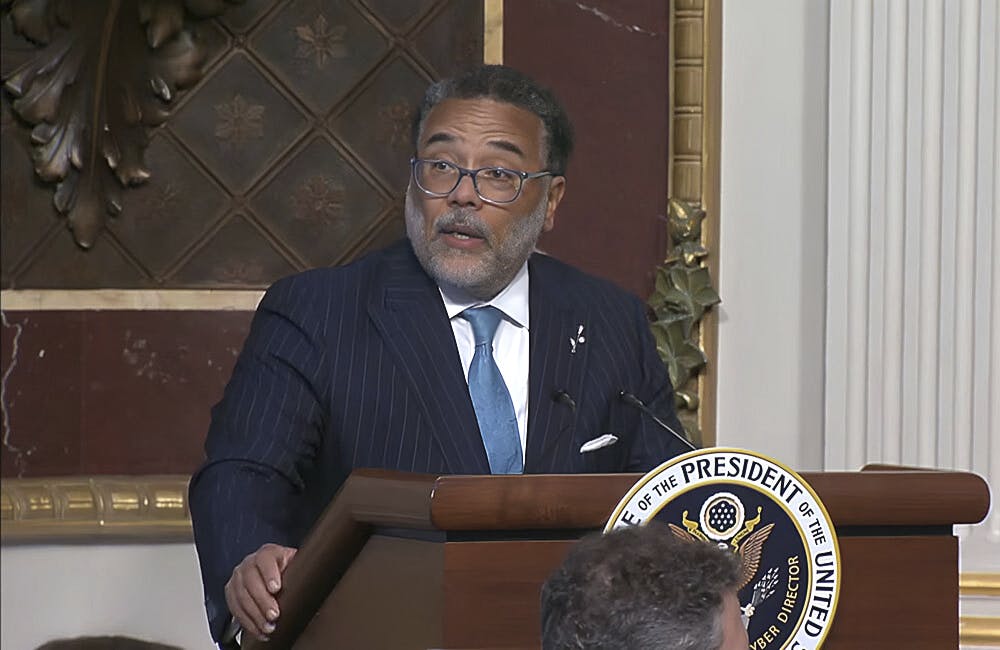The Key Role of Registered Apprenticeships in Closing Gender Pay Gaps
Labor leadership outlines the benefits of registered apprenticeship programs for traditional underserved populations.

Registered apprenticeship programs have the potential to close the gender pay gap, Department of Labor Deputy Administrator in the Office of Apprenticeship Megan Baird said during GovCIO Media & Research’s Women Tech Leaders Summit Thursday.
The Biden-Harris Administration has made expanding registered apprenticeships a top priority. Apprenticeships offer a high-quality, debt-free, equitable “earn and learn” model to apprentices, with a nationally recognized credential system that helps employers hire a more demographically diverse workforce and provide workers with on-the-job learning experience, job-related instruction with a mentor and a clear pathway to a well-paying job.
“We are really pushing to move into what we call ‘new and emerging industries’ — so things like tech, cybersecurity, health care, financial services, clean energy — particularly industries where we know right now are having some serious workforce challenges in finding a skilled workforce,” Baird said.
These programs have the potential to solve challenges agencies and organizations face with recruitment, training, onboarding and retention. To begin an apprenticeship program and combat these challenges, Baird said organizations should analyze their workforce data to identify gaps and better fill them.
“Identify what is the workforce challenge you’re trying to address. The top three that I hear are we cannot find skilled workers, we cannot retain our workers, and we don’t know how to diversify the workforce,” Baird said.
Registered apprenticeship programs focus on a few key components that differentiate it from other workforce training strategies. Under these programs, individuals are fully employed by an employer and have paid work experience, are offered progressive wages and have access to on-the-job learning, classroom instruction and mentorship. These programs also lead to an industry recognized and nationally portable credential.
Registered apprenticeship can also be an effective training strategy to open opportunities for populations that have been historically marginalized and underrepresented, focusing on women, people of color and individuals with a disability.
“Our priority from the president is to make sure that registered apprenticeship is available to all workers, particularly those underrepresented, so that they have opportunities to be in these well-paying jobs,” Baird said. “Registered apprenticeship is a strategy to help employers find and recruit a diverse workforce and ensure that they have a highly skilled workforce. It’s a very flexible program. It allows them to bring people in that they may not previously have been able to hire.”
Measuring data from registered apprenticeship programs, DOL found that every $100 an employer invests into a registered apprenticeship, results in $144 return. There’s also a significant reduction and staff turnover, higher employee satisfaction and increased access to well-paying jobs for underrepresented populations.
Additionally, women apprentices’ earnings grew at a faster pace — 62% — compared to women comparable workers whose growth of earnings were 19%. Labor also found that the gender pay gap closed substantially two and a half years after a woman entered a registered apprenticeship program.
“To put that into context, before a woman started her apprenticeship program, her earnings were 77% of a male apprentice. Then, two and a half years after, their earnings growth without 92% of male apprentices’ wages. So that is significant, and that window of gender pay gap is significantly shrinking. This led the evaluators to basically say that registered apprenticeship can be a solution to actually close the gender pay gap,” Baird said.
This is a carousel with manually rotating slides. Use Next and Previous buttons to navigate or jump to a slide with the slide dots
-

Federal Women Leaders Reflect on AI Guidelines, Inclusivity
Inclusivity, collaboration and standards will help increase diversity in AI, federal women tech leaders say.
5m read -

Cyber Strategy 2.0 Stresses Critical Infrastructure Protections
A year after its release, the second cybersecurity strategy and implementation plan focus on new initiatives for critical infrastructure.
5m read -

White House Might Remove Degrees From Federal Cyber, IT Jobs
White House and federal leaders are moving toward skills-based hiring practices to fill critical roles in IT and cybersecurity.
5m read -

IRS Tax Filing Pilot Part of Digital-First Customer Experience Plan
Many taxpayers increasingly expect flexible, easy and self-directed digital interactions, agency leaders said.
5m read








